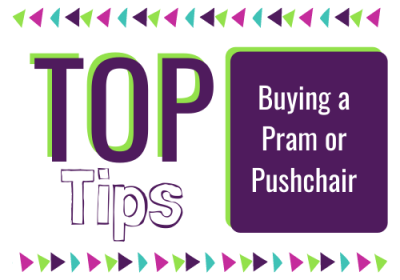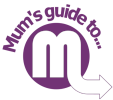Buying a pram or pushchair is a major investment, one of the biggest you’ll make when you are buying all the baby paraphernalia!
Some parents buy one which they keep for all future babies and some parents have a new one for each new arrival.
When my son was about a year old I was working in the nursery industry and visiting trade shows here and abroad, meeting pushchair designers and brand leaders. I thought it might be an idea to share my top tips with you.
.png)
The first thing is to decide what exactly you need. These are the basics…
Prams
Essentially, this is a carrycot on wheels. It’s recommended that babies lie flat for the first 6 months at least and this is the perfect solution for that as a carrycot protects the baby from the elements. Most prams will come with a pushchair seat to use in the next stage.
Travel Systems
A travel system is the most expensive option but it caters for all needs. The system will come with a carrycot for the newborn stage, a pushchair for the next stage and Group 0 car seat, which can be attached to the chassis for short periods of time (recommended for no more than 2 hours at a time) and used in the car for the first 9 months.
Pushchairs
Pushchairs may not come with a carrycot option. This is a seat which is suitable for use from 6 months+. Many pushchair seats can be parent or world facing and will have a recline option although they may not have a lie flat function.
Strollers
Some strollers do have a lie flat option so can be used from birth but some will only be suitable from 6 months+. They are all word facing and can have an umbrella fold or flat fold depending on the style and brand.
Twins/Tandems
These are the obvious solution if you are having twins but are also a consideration if you have 2 babies very close in age. You can easily modify the system to acommodate a newborn and an older child together.
All Terrain Pushchairs
These are the best choice if you will be using your new wheels on uneven ground a lot. Perfect for those who like to walk in the woods as well as around town. They are bigger than a standard pushchair, often with just 3 wheels but have the benefit of pneumatic (air filled) tyres and good suspension.
.png)
.png)
When looking at the different options, these are the main points which I think need to be considered. Don't just think about how it looks as this will probably be the item you use the most so it's functionality is vital.
- Main Use - the first decision to make is what will the main uses of your pushchair be - urban, countryside, jogging etc Each of these will have a different level of suspension, tyres and chassis build.
- Size - measure the width of your front door to make sure your purchase can fit through without having to remove the wheels. Also check that the folded pushchair will fit into the boot of your car easily. Think about the space needed to store the pushchair at home and where you will do this.
- Weight - some pushchairs are surprisingly heavy and I did struggle with mine just lifting it in and out of the car. There are a selection of 'light-weight' pushchairs on the market to look at too which are especially useful for travel and holidays.
- Adjustable Handles - this is definitely something to consider if you or a partner are quite tall. Taking the baby for a walk and struggling with back ache due to leaning over the handle will not be fun!
- Basket Size - once you become a parent you will find you carry so much around with you! A decent size basket can be a huge benefit, especially if you plan to walk to the shops a lot and leave the car at home.
- Hood Size - on carry cots and pushchair seats the hood size can vary. It is considered dangerous to drape a blanket over the hood to keep the sun out, due to the baby overheating, so an extendable hood is definitely a better option. It's also helpful if your baby or toddler will be napping in their pushchair.
- Parent Facing or World Facing - this might not seem like an important consideration but most parents love to have their baby facing them as it's great for eye contact and communication, especially in the early stages.
- Seat Recline - not all pushchair seats will have the same recline options. Check before you buy that you are happy with the recline as this could make a big difference for comfort and naps!
- Compatibility with Car Seat - If you don't buy a travel system and want to use your car seat with adaptors on the chassis of the pushchair, check that the two are compatible.
- Speed & Ease of Fold - some pushchairs boast a one handed fold while others are a bit more challenging. Ultimately, once you get used to your own pushchairs fold it's usually fine, but it's definitely worth asking in store for a demo of the fold!
- Accessories - there are so many accessories to consider, some will come with your purchase as a standard, and others will be an extra cost. There are buggy boards, UV sun shades, parasols, cup holders, rain covers, foot muffs, insect nets, clip on toys and so much more.
.png)
Looking after your new wheels
This can be a challenge especially if you like to go 'off-roading' with your pushchair. It's worth a regular brush down for crumbs and there are local companies who specialise in cleaning pushchairs. My top tip for dealing with muddy wheels is to keep 4 shower caps to hand which can be used to cover the wheels when the pushchairs is being put back into the boot of the car, protecting your car from excess mud! (I learned this the hard way!)
.png)
There are lots of buying guides online but in the end it's best to shop about, try out the 'push' the 'steer' and the 'fold' and to make sure that the pram or pushchair you choose suits you and your family's lifestyle.










 Browse the site
Browse the site






